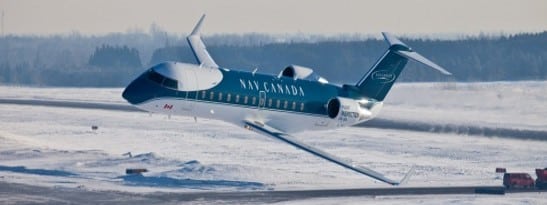
Photo: Aireon
The first flight of Aireon and Nav Canada’s ADS-B technology was a success, Aireon said. The Canadian air navigation service provider scheduled two flight tests, and the FAA scheduled additional flight tests with Polaris Flight Systems.
At the beginning of March, a Bombardier aircraft with top- and bottom-mounted 125-watt ADS-B antennas transmitted 6,935 ADS-B messages to an Aireon payload. After the messages were received and decoded, analysis showed comparable results to that of terrestrial ADS-B stations. The flight test had the aircraft flying through the Montreal, Winnipeg and Edmonton flight information regions and was planned so that the appropriate Iridium Next satellite carrying the Aireon receiver was overhead.
At the end of March, Aireon conducted a flight test with Polaris, during which a Beechcraft Bonanza was equipped with a top- and bottom-mounted 200-watt ADS-B antenna. It flew through the Albuquerque flight information region and transmitted more than 1,050 ADS-B messages to two Aireon payloads. Following shortly after, the FAA’s “flying laboratory” Bombardier jet flew with three Aireon payloads available to receive data. That payload received and decoded 2,462 ADS-B messages with comparable results to stations on the ground. That flight test took place in the Washington and New York information regions.
Aireon aims to have its space-based ADS-B system operational next year. Seven SpaceX launches are scheduled for the next 12 to 15 months. One is scheduled for next month. In its operational entirety, the constellation is to consist of 66 satellites, with nine additional satellites serving as on-orbit spares.